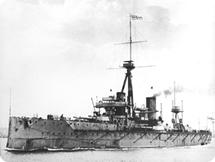
|
|
||||||||
Charles Algernon Parsons
Following this exploit which, of course, gained the attention of the Admiralty, Parsons set up his company 'Parsons Marine Steam Turbine Company' in 1897. Two years later, a turbine driven destroyer, the HMS Viper, capable of 30 knots was launched.
 The Dreadnought |
This was followed by the HMS Cobra and then in 1906, the HMS Dreadnought, with a top speed of 21 knots, which was described as the ship that made all its contemporaries obsolescent. By the time of the battle of Jutland in 1916, super dreadnoughts were already being used. |
It is said that Charles Parsons sketched the original design for the reaction blades in his turbine on the back of an envelope, and this remained the standard for many years. It took £100,000 of research to improve its efficiency by 2%, a testimony to the instinctive knowledge of a true genius.
Charles Parsons took out over 300 patents. He was also a family man, and some of his inventions: a powered model helicopter, monoplane and three-wheeled go-cart were used to entertain his children. His daughter Rachel Mary later continued in his shoes, taking the Mechanical Sciences Tripos at Newnham.